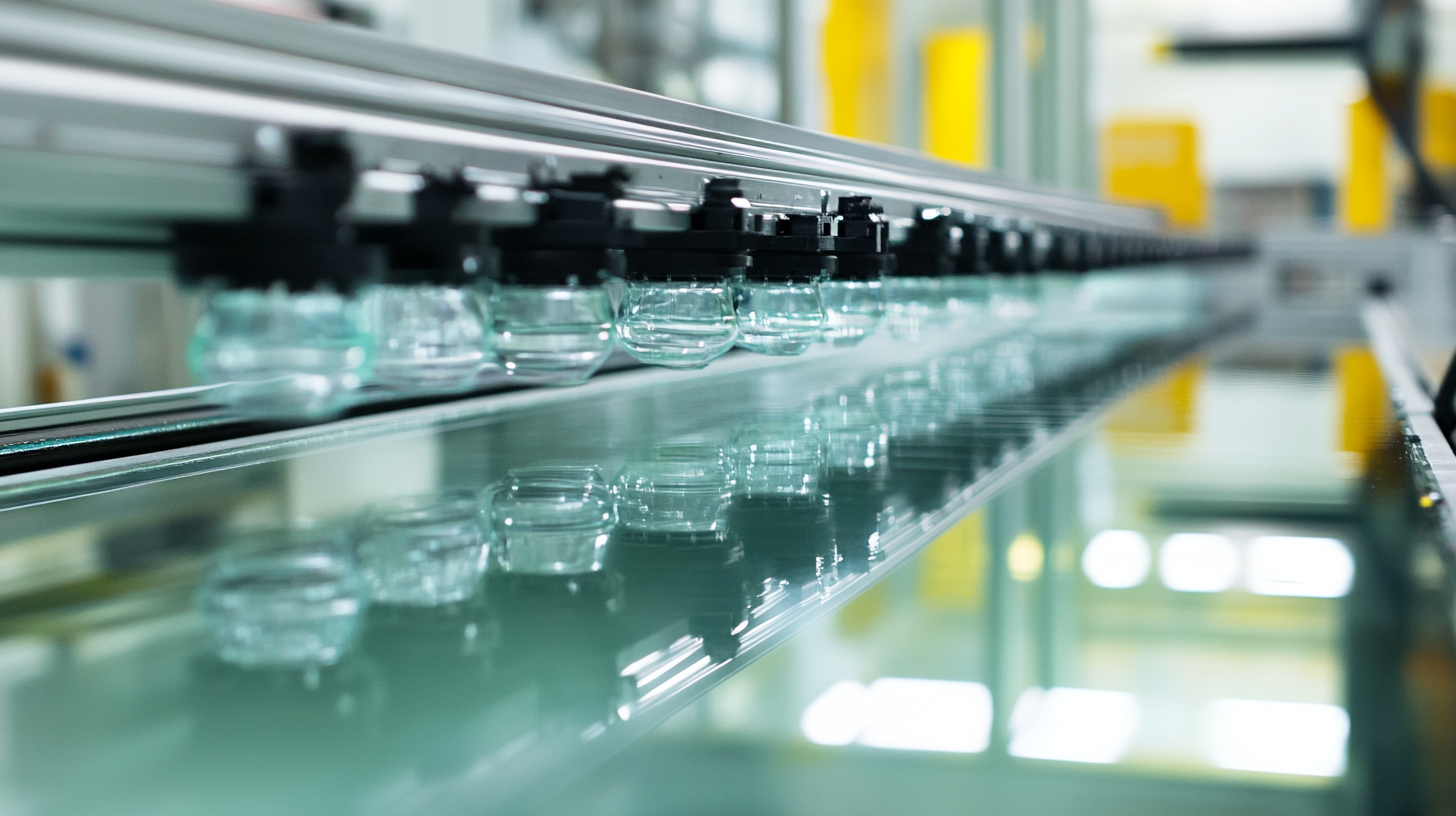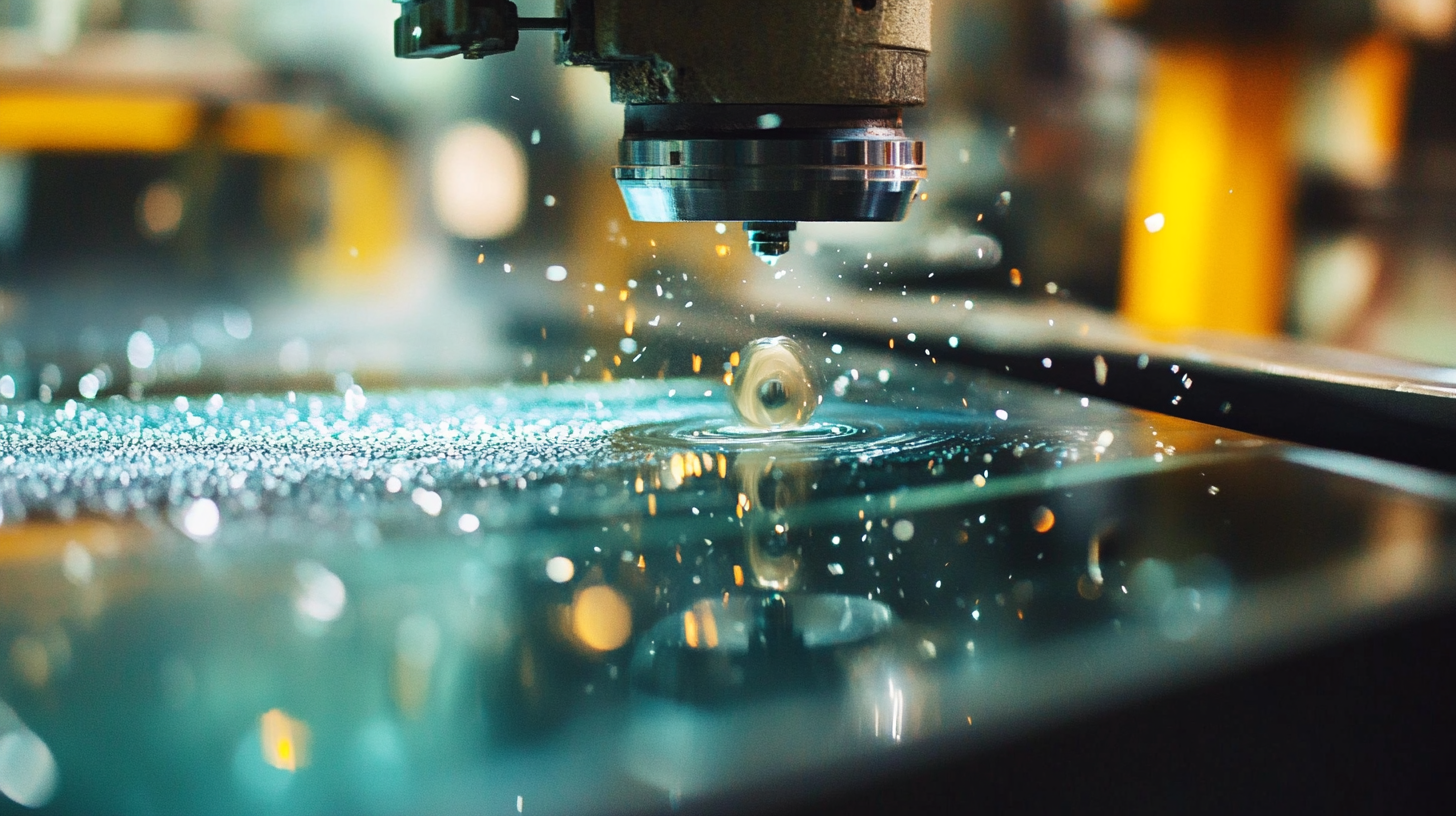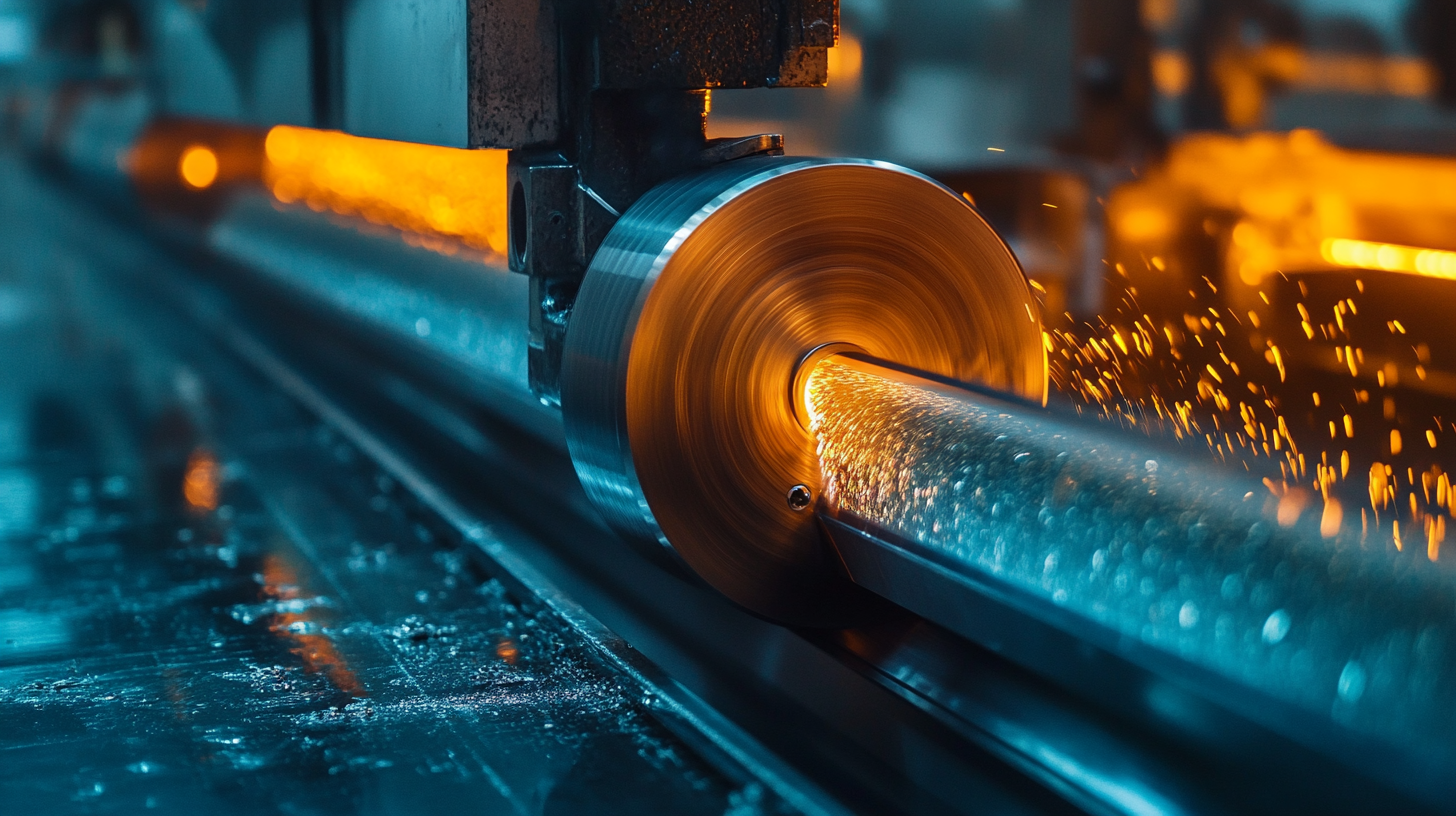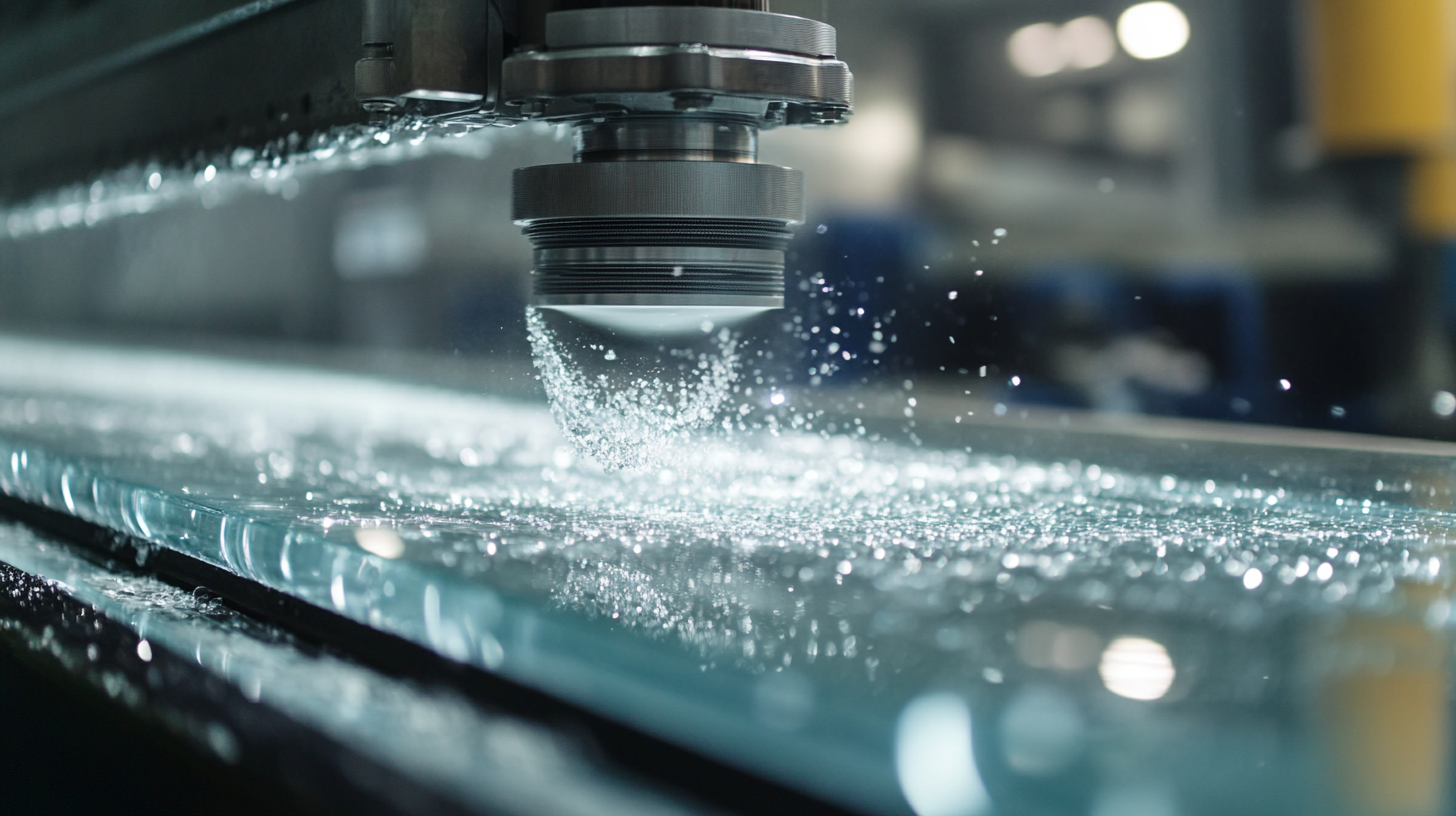Exploring Glass Grinding Machines: Key Features, Applications, and Best Practices for Global Buyers
The glass grinding machine industry has witnessed significant advancements in recent years, driven by rising demand across various sectors, including construction, automotive, and electronics. According to a report by Global Market Insights, the glass processing market is projected to surpass $26 billion by 2027, with glass grinding machines playing a pivotal role in enhancing product quality and production efficiency. These machines are essential for achieving precise dimensions and smooth finishes, catering to increasing customer expectations for high-quality glass products.
As global buyers navigate this evolving landscape, understanding the key features, applications, and best practices associated with glass grinding machines becomes crucial. With innovations in technology such as computer numerical control (CNC) systems and advancements in diamond grinding tools, manufacturers are now capable of producing glass components with unparalleled accuracy and speed. By exploring the dynamics of glass grinding machines, buyers can make informed decisions that align with their operational needs and strategic goals in a highly competitive market.

Understanding the Core Components of Glass Grinding Machines and Their Impact on Performance
When it comes to glass grinding machines, understanding their core components is crucial for optimizing performance and achieving high-quality results. At the heart of these machines are the grinding wheels, which come in various materials such as diamond, aluminum oxide, and silicon carbide. Each type of wheel offers unique benefits, with diamond wheels typically providing the best finish and longevity for hard glass materials, while aluminum oxide wheels are often used for softer glass types. Selecting the right grinding wheel based on the glass being processed is essential for efficiency and effectiveness in grinding operations.
Another critical component is the motor and drive system. The power and speed of the motor significantly influence the machine's grinding capabilities. High-speed motors enable precise grinding at faster rates, while a robust drive system ensures stability and reduces vibrations, leading to more accurate cuts and finishes. Additionally, features such as variable speed controls allow operators to adjust settings based on specific grinding tasks, further enhancing versatility and performance.
Furthermore, advanced technology integration, like automated feeds and CNC capabilities, has transformed glass grinding operations. These innovations not only improve precision but also minimize operator error, leading to optimized production processes. By investing in machines with these advanced features, buyers can significantly impact their overall productivity and product quality, making informed decisions based on a deep understanding of the core components and their impact on performance.

Analyzing the Market Trends: Key Growth Drivers for the Glass Grinding Machine Industry
The global glass grinding machine market is poised for significant growth, driven by various market trends and demands across multiple industries. As analyzed by Custom Market Insights, factors like the expansion of the construction and automotive sectors are fueling the demand for precision machinery. With a projected growth of USD 407.4 billion for the machinery and industrial automation market by 2032, reflecting an 8.2% CAGR, the glass grinding machine sector stands to benefit considerably from these advancements.
The rising popularity of tempered glass in residential and commercial settings is another key factor propelling the market. As construction activities surge and the demand for high-quality glass products increases, manufacturers are expected to invest heavily in advanced glass grinding technologies. These machines are essential for producing finely finished glass surfaces that meet modern aesthetic and performance standards.
Moreover, the emergence of automated systems is also reshaping the landscape of the glass grinding machine market. Automation enhances efficiency, reduces labor costs, and minimizes errors in production processes. As industries strive to improve productivity, the adoption of automated glass grinding machines is likely to witness a notable uptick, further supporting the market's growth trajectory. With the convergence of innovation, demand, and technological progress, stakeholders in the glass grinding machine industry will find ample opportunities in the coming years.

Identifying Applications of Glass Grinding Machines Across Various Sectors
Glass grinding machines play a pivotal role in various industries, serving applications that range from automotive to construction and electronics. According to a recent report by Grand View Research, the global glass processing market is expected to reach USD 176.3 billion by 2025, with an increasing demand for precision glass products driving the need for advanced grinding technologies. In the automotive sector, glass grinding machines are crucial for shaping and finishing windshields, windows, and mirrors, contributing to the growing trend towards safety and efficiency in vehicle manufacturing.
Moreover, the construction industry heavily relies on glass grinding machines for architectural glass applications. The ability to produce custom shapes and sizes enhances the aesthetic appeal of buildings while ensuring structural integrity. A study by Allied Market Research indicates that the architectural glass market is projected to grow at a CAGR of 7.8% from 2020 to 2027, further emphasizing the significant role that glass grinding technology plays in meeting architectural demands.
In the electronics field, precision is paramount, and glass grinding machines are essential for the fabrication of components such as touch screens and displays. Market research shows that the increasing adoption of smart devices will escalate the demand for high-quality glass products, highlighting the necessity of innovative grinding solutions. As industries continue to evolve, the versatility and efficiency of glass grinding machines will remain integral to meeting the diverse needs across sectors.

Evaluating Energy Efficiency and Cost-Effectiveness in Modern Glass Grinding Solutions
In the ever-evolving landscape of glass manufacturing, energy efficiency and cost-effectiveness stand out as critical parameters for modern glass grinding solutions. According to a report by MarketsandMarkets, the global glass processing market is projected to reach $98.43 billion by 2025, driven by increasing demand for energy-efficient machinery. In this context, investing in advanced glass grinding machines that emphasize energy conservation can significantly enhance a company's bottom line.
Modern glass grinding machines are increasingly designed with innovative technologies that optimize energy consumption. For example, many new models incorporate variable frequency drives (VFDs), which allow operators to adjust the motor speed based on production requirements. This adaptation can lead to energy savings of up to 30%, as indicated in a study conducted by the International Energy Agency (IEA). Moreover, efficient cooling systems are implemented to minimize energy usage during the grinding process, effectively reducing operational costs over time.
Cost-effectiveness also plays a pivotal role in the selection of glass grinding solutions. A comprehensive analysis by B2B International highlights that businesses can achieve a return on investment (ROI) within 12 to 18 months when using machines that prioritize energy efficiency. Additionally, reduced wear and tear from optimized grinding processes lead to lower maintenance costs and longer equipment lifespans, further contributing to overall savings. As the industry continues to prioritize sustainability, glass manufacturers who adopt energy-efficient technologies are likely to gain a competitive edge in the marketplace.
Best Practices for Selecting and Maintaining Glass Grinding Machines in a Competitive Market
When selecting a glass grinding machine, it's crucial to consider several key factors that can impact performance, efficiency, and overall satisfaction. First, evaluate the machine's specifications, such as grinding speed, precision, and the types of glass it can handle. A machine that is versatile enough to grind various glass products will provide more value, especially for businesses that deal with varying project requirements. Additionally, features like automated settings and user-friendly interfaces can significantly enhance operational efficiency, reducing the learning curve for new operators.
Maintenance is equally critical in ensuring the longevity and reliability of glass grinding machines. Establishing a regular maintenance schedule that includes cleaning, inspection, and parts replacement can prevent potential breakdowns and ensure optimal performance. It's advisable to consult the manufacturer’s guidelines to identify the specific needs of your machine. Investing in proper training for staff also plays a significant role; well-trained operators are more likely to recognize potential issues early, thus minimizing downtime and costly repairs.
In a competitive market, keeping up with technological advancements is essential. Buyers should stay informed about the latest innovations in glass grinding technology, such as improvements in efficiency and sustainability. Selecting equipment that integrates smart technology can not only enhance productivity but also provide valuable data analytics for better decision-making in the production process. By following these best practices in selection and maintenance, buyers can maximize their investment in glass grinding machines and maintain a competitive edge in the market.

Home
About Us
Products
UPVC PVC Window Machine
Aluminum Window Machine
Glass Cutting Machine
Glass Edging Machine
Insulating Glass Machine
Glass lifting machine
Glass Washing Machine
Glass Laminating Machine
Glass Sandblasting Machine
Glass Drilling Machine
CNC Glass Working Center
CNC Non-Metal Cutting Machine
The Other Glass Machinery
Application
Download
News
Contact Us




